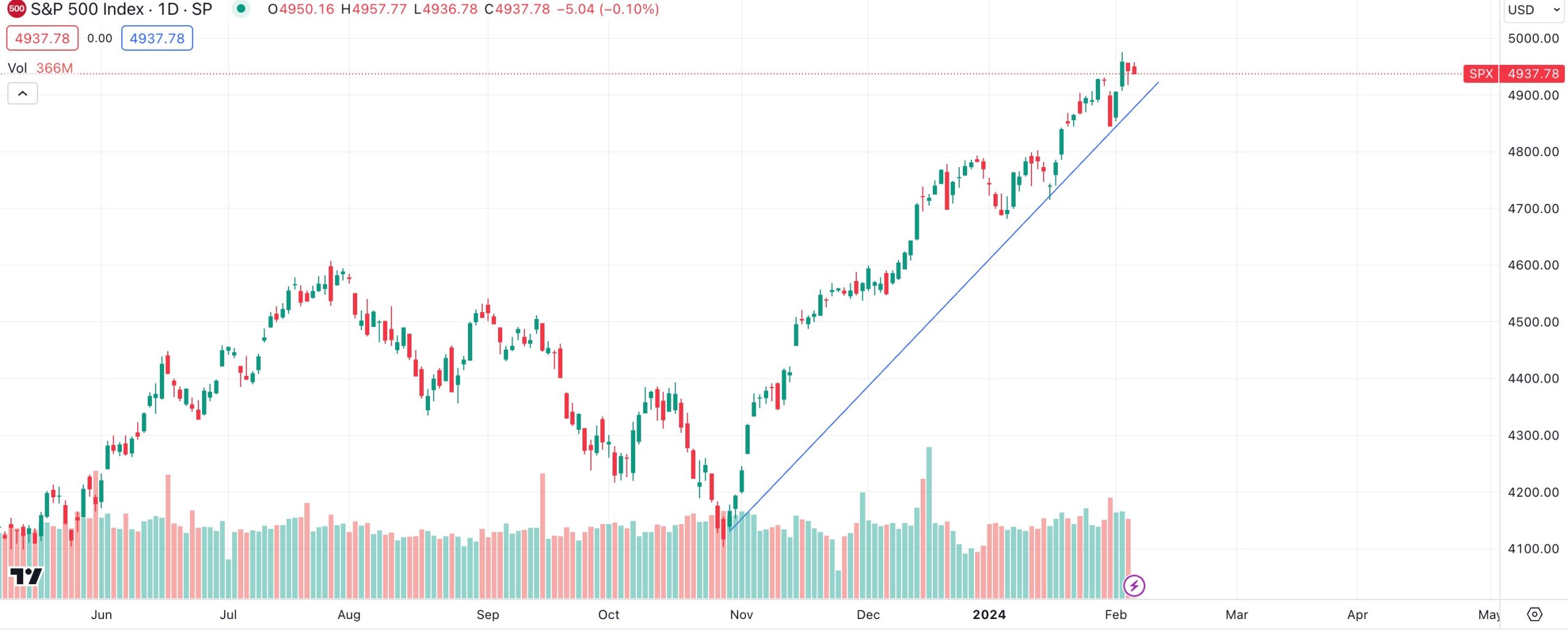Market Commentary: 1 Easy Way To Get Lots Of Extra Income
The S&P 500 has been on a monumental run over the past few months, climbing from near 4,100 last October to almost 5,000 more recently.
It’s a tough time for bulls and bears after such a sharp run up in a narrow time window. The options are to short the market at your peril or go long the market and risk a big drawdown. What should you do?
Key Points
- With the market elevated, selling calls offers a means of generating income and simultaneously lowering cost basis.
- If the market falls substantially, the calls offer a means of protection against the downside move.
- At this time, with the market so elevated, selling premium is a smart way to lock in income.
The Market Snapshot Now
As you can see from the chart below of the S&P 500, the move higher has been sustained and massive for the past four months. The question is how long will it last now?
Timing the market is notoriously challenging but what if there was a way to get the best of both worlds? Is it possible to stay long the market if it keeps rising while making money if it does a U-turn?
It turns out one of the simplest strategies is also among the most powerful at a time like this. It’s the covered call strategy whereby calls are sold against stocks to generate income.
For example, if you owned 100 shares of Vanguard’s S&P 500 fund, VOO, now you could lock in around $1,000 of premium by selling a call options out in time a few months near-the-money. The bet is that the market won’t go up a whole lot from here but even if it does edge a bit higher you won’t be much worse off, if at all.
On the other hand, if the market falls, the premium is locked in and lowers the overall cost basis of your position.
How To Trade The Covered Call Now
If you hold a different view, the strategy can still be applied. For example, if you thought the market could still rally a bit higher, you could sell call options at higher strike prices.
The obligation of the call is to sell your stock when assigned, meaning whatever the strike price of the call that’s the price you agree to sell your stock if the market rallies to that level. But you can select a higher strike price with the tradeoff being you would collect less premium.
No matter what your view you can find a call option that matches your outlook. Heck, even if you thought the market would crash you could sell calls at prices below where the market is trading so you would lose less on your equity positions on a downturn.
One important point to note is that there is only limited downside protection from selling the calls, equivalent to the premium received. If the market drops precipitously, a put option offers a better form of protection against downside moves. For now, with the market still in a bullish trend, it doesn’t make a whole lot of sense to bet aggressively on the downside via puts. That day will come but for now the covered call offers a stepping stone to lowering risk while still generating income.




